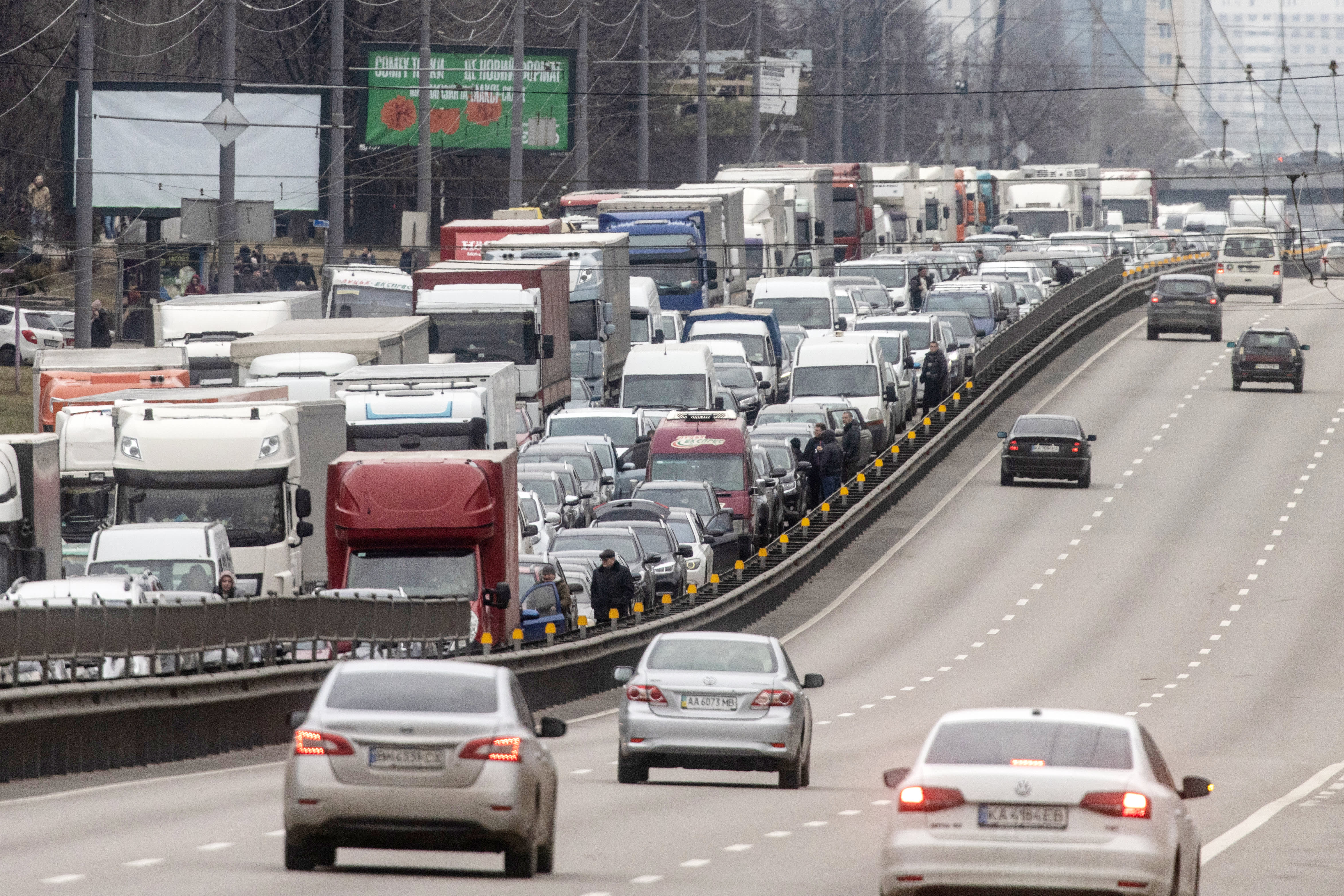Renault, Hyundai and VW have most exposure to Russian car market
Cars sit at a standstill as people try to leave the city on February 24, 2022 in Kyiv, Ukraine.
Chris Mcgrath | Getty Images
New U.S. sanctions and Moscow’s invasion of the Ukraine could have a wide-ranging impact on the already constrained automotive global supply chain, but only a few automakers have notable exposure in Russia.
France-based Renault Group, which has a controlling stake in Russian automaker AvtoVAZ, accounts for 39.5% of the country’s vehicle production, followed by South Korea-based Hyundai Group at 27.2%.
German automaker Volkswagen has a 12.2% share, according to research firm IHS Markit, while Toyota Motor follows at 5.5%. Others follow at low single digits.
“The biggest global [automakers] aren’t making tons of money out of Russia,” said Tim Urquhart, a European principal automotive analyst at IHS. “But Renault is obviously the biggest company in terms of exposure.”
Renault will suspend production at its assembly plant in Moscow next week due to “forced change in existing logistic routes” that are causing component shortages, Reuters reported Friday.
Among the Detroit Three automakers, General Motors ceased production operations in Russia seven years ago and ended a joint venture in 2019, but it continues to operate a sales office for imported vehicles. Both Ford Motor, which largely exited the country in 2019, and Stellantis, formerly Fiat Chrysler, each operate a factory through joint ventures. Stellantis represents only 1.6% of the country’s vehicle production, IHS reports.
Russian car market
In the 2000s, automakers expected Russia to become a major automotive market and hub to boost business in international markets, including Europe. But instability in the country and a stagnant economy, among other factors, led the market to peak at only 2.96 million unit sales in 2008, according to IHS.
“It’s been much diminished in the last few years. I don’t think the latest events are going to change that,” Urquhart said.
The Russian vehicle market came to between 1.6 million and 1.75 million in annual unit sales over the last three years. That amounts to only a 10th of the size of the U.S. market last year and only represented about 2% of global vehicle sales in 2021.
Ukraine has little automotive production, and vehicle sales last year amounted to only about 100,000 units, according to IHS. But Russia’s invasion could have a ripple effect on the global automotive supply chain, specifically involving supplies of neon gas and palladium for semiconductor chips and catalytic converters.
“The potential impact for the auto industry seems to be mainly focused on the potential disruption of natural resources supply,” said Stephanie Brinley, a U.S.-based principal automotive analyst at IHS. “That includes neon gas out of Ukraine and palladium out of Russia. At this point, we can’t say how that impact or when that impact is going to be felt.”
Parts problems
The U.S. neon supply, which is used for lithography processes for chip production, comes almost entirely from Ukraine and Russia, according to Techcet, a California-based market research firm that specializes in critical supply chain materials and components.
Russia also is a key palladium supplier, along with South Africa, and supplies approximately 33% of global demand, according to Techcet. Palladium is used for catalytic converters in automobile manufacturing.
“It’s just one more thing that is going to force prices up,” said Techcet CEO Lita Shon-Roy. “The automotive market is going to feel that to be sure.”
Shon-Roy said the pricing increases likely won’t be felt for six months, if not a year, because most chip manufacturers have long-term agreements for such raw materials.
For all the latest Technology News Click Here

